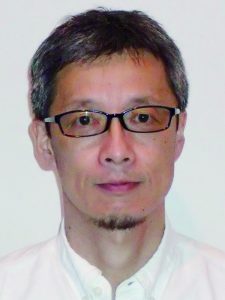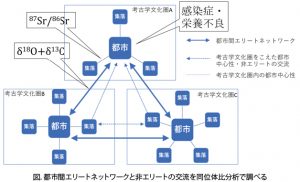C01:Isotopic studies for reconstructing the dynamics of humans and objects in the dawn of Chinese Civilization
Isotopic documentation of the urbanization in the Chinese Early Bronze Age |
|
| Minoru YONEDA (The University of Tokyo) |
The “city”, where people, objects and information are integrated, is one of the archaeological representations of civilization. Traditionally, the emergence of civilizations has been discussed mainly in terms of the identification of cities, as indicated by the presence of huge enclosure walls, palatine areas, workshops and aristocratic tombs. However, isotope analysis of human remains from the late Neolithic Liangzhu city in the lower Yangtze River has revealed that the presence of distant outsiders, which we will investigate as a novel marker of a city. In the project C01 “Isotopic studies for reconstructing the dynamics of humans and objects in the dawn of Chinese Civilization”, we investigated whether there were regional cities in the late Neolithic China that attracted outsiders beyond the archaeological cultural zones, and whether there were exchange network of elites and/or non-elites. We will use isotope analysis (oxygen, carbon, strontium, neodymium, and lead) of human remains, pottery and ivory objects in conjunction with palaeopathology of infectious diseases. For example, the place of origin will be inferred from the oxygen and strontium isotope ratios of tooth enamel, especially in scattered human remains and those recovered from unique circumstances such as martyrdom and skull accumulation. The scattered human remains have not attracted much attention in previous studies because they do not provide information on sex, age or social background reflected in their burial. In this study, we will add information on sex using the latest proteome analysis, and decipher the background of the individual to the maximum extent possible through detailed osteological and paleopathological observations, thus increasing the value of the material. By comparing the strontium isotope ratios of human bones and associated pottery in the tombs of common people, the relationship between the movements of people and objects will be investigated, which has not been seen in material-cultural research. For the whole project, Group C01 will provide empirical data on the role of the movements of people, goods and information in the formation of Chinese civilization and the mechanism by which the rise of hybridity gave rise to civilization by describing the relationship between “city and city” or “city and periphery” across archaeological cultural spheres using isotope indicators.
Members
| Principal investigator | Minoru YONEDA | The University of Tokyo |
|---|---|---|
| Co-investigator | Junmei SAWADA | Niigata University of Health and Welfare |
| Kenji OKAZAKI | Tottori University | |
| Eriko ISHIMARU | Hiroshima University | |
| Takumi TSUTAYA | The Graduate University of Advanced Studies | |
| Hagihara Yasuo | Niigata University of Health and Welfare | |
| Research collaborator | Masafumi SAITOH | The University of Tokyo |


